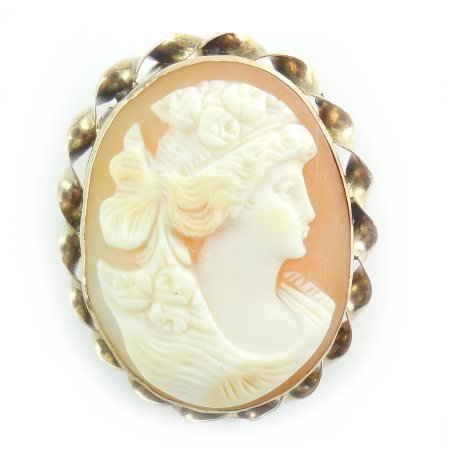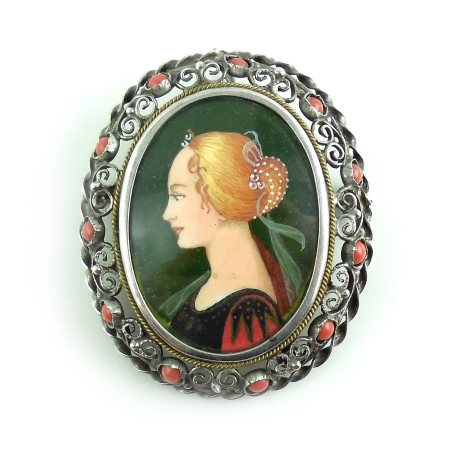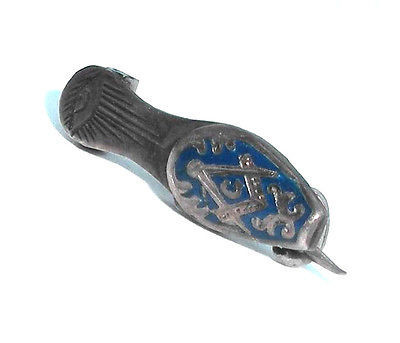Description
Vintage Mid Century Modern Stylized Sterling Silver Lily Pin
About Mid Century Sterling Silver Modernism Jewelry:
Reference: http://www.collectorsweekly.com/fine-jewelry/modernist
The modernist jewelers in the United States who practiced their craft from the 1930s through the 1960s were pretty emphatic about their rejection of the styles that had come before. Victorian jewelry was dismissed as too decorative. Art Nouveau pieces were deemed too fussy. Art Deco aesthetic was considered excessively rigid.
Modernist jewelers felt they had more in common with painters, sculptors, and other modern artists of the day. Their ambitious goal was to create one-of-a-kind works of art that people could wear.
Well-Known Mid Century Silver Artists:
Kramer:
One of the early champions and practitioners of the form was Sam Kramer, who, like many of his contemporaries, lived, worked, and sold his creations in New York City’s Greenwich Village. Kramer worked primarily in silver, but he was also adept at fashioning rings, earrings, and pins out of copper. He also used found objects including moose teeth, buttons, fossils, and ancient coins. Sometimes Kramer used semi-precious stones such as garnets or opals in his surreal, geometric, or biomorphic pieces.
Art Smith:
Another unofficial leader of the modernist jewelry movement was Kramer’s neighbor Art Smith. His jewelry ranged from simple silver neck rings to biomorphic pieces that drew from African motifs. Smith made small pieces such as cuff links. However, many of his best works were large enough to wrap the body, as if the human form was the mere backdrop for his creations. His vintage copper wrist cuffs, especially the “jazz” cuffs with musical notes applied to their outside surfaces, are highly collectible.
Wiener:
Boomerangs, straight lines, intersecting curves, and atomic-age shapes typified Ed Wiener’s work. Sometimes a pair of silver earrings resembling deformed hourglasses were adorned with a single pearl; other times, a cat’s-eye agate would be placed in the center of a piece, as if to give his inanimate objects the semblance of a human face.
Lobel:
Another Greenwich Village resident whose vintage modernist jewelry is highly prized was Paul Lobel. He designed lovely silver pins and bracelets, as well as glass, furniture, and silver hollowware.
Cooke:
Outside New York there was Betty Cooke, who worked in the Bauhaus mode in Baltimore. Composed of geometric shapes her jewelry characterized a strong sense of orde. Deliberate disruption through the keen placement of pearls, small blocks of wood, or even unfinished stones such as quartz distinguished here jewelry.
DePatta:
Another Bauhaus acolyte was Margaret De Patta, whose work reflected the profound influence of Bauhaus teacher Laszlo Moholy-Nagy, with whom she studied. Meanwhile, out in San Francisco, Peter Macchiarini looked to African masks and Cubism for inspiration. Brass, copper, and silver were common materials, along with opals, agates, and wood.
Europe:
In Scandinavia during the 1940s and ’50s, a parallel movement was underway. Henning Koppel and Nanna Ditzel were two notable Georg Jensen designers. Their silver necklaces sporting amoeba-like and teardrop shapes combined the perfection of Danish silversmithing with an interest in natural, even primal, forms.
Later, in 1960s Finland, Bjorn Weckstrom married solid silver and polished chunks of acrylic to create rings, bracelets, and pendants that were at once space age and organic.











